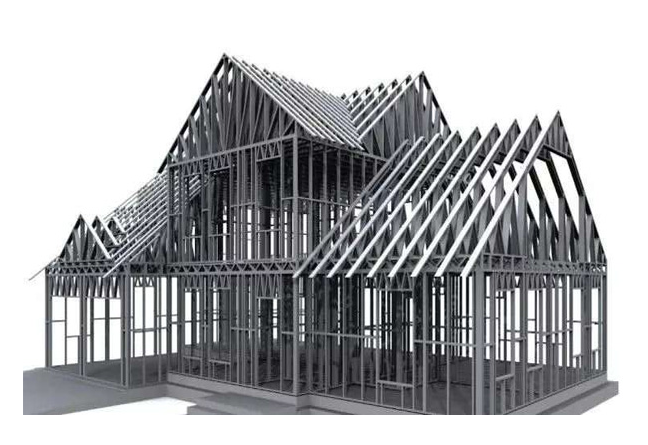Lightweight steel framing uses thin steel profiles to build load-bearing structures and offers several benefits including durability, strength and design flexibility. Lightweight steel framing market revenue is driven by the growing demand for cost-effective and sustainable construction solutions across various sectors including residential, commercial, and industrial. Light steel framing is increasingly used in construction projects because of its many advantages, including reduced construction time, reduced material waste, and improved resistance to fire, pests, and natural disasters. These advantages make lightweight steel frames an attractive alternative to traditional construction methods, thereby driving market growth. The use of lightweight steel framing is in line with sustainable building practices as it supports recycling, reduces energy consumption and provides better insulation. The construction industry's focus on energy efficiency and environmental sustainability is also expected to increase the demand for lightweight steel frames. Overall, the light steel frame market has broad prospects, characterized by increasing market revenue and a positive compound annual growth rate. As the construction industry continues to shift towards cost-effective and sustainable building solutions, the advantages offered by lightweight steel frames are also a key driver of market growth. As people's demand for energy-saving and environmentally friendly construction methods increases, the light steel frame market continues to expand and is expected to meet the needs of various industries and contribute to the development of the entire construction industry.

The growing popularity of steel as a construction material is the major driver for the lightweight steel framing market. Steel offers several advantages over traditional building materials such as wood and concrete. First, steel is extremely durable and resists the elements such as fire, pests, and weathering, resulting in a longer lifespan and lower maintenance costs. Second, steel has a better strength-to-weight ratio, allowing for lighter, more efficient structural designs. Therefore, the costs of basic engineering, transportation and installation can be reduced. Third, steel is a sustainable material that can be recycled and reused, reducing environmental impact. The increasing adoption of steel in construction projects can be found in various industry reports and case studies. For example, many commercial buildings, residential and industrial facilities now use steel framing systems due to their versatility and long-term benefits. Global steel production and consumption data also reflect the increasing consumption of steel in the construction industry, underscoring its growing position as the building material of choice.

Rapid growth in urbanization and infrastructure development is driving the need for efficient and cost-effective construction methods such as lightweight steel frames. As more people move to cities, the demand for housing and infrastructure continues to increase. Light steel frames offer advantages such as construction speed, design flexibility and cost-effectiveness, making them an attractive solution for urban development projects. The surge in urbanization and infrastructure development is also reflected in increased construction activity in urban areas around the world. In urban areas, the preference for lightweight steel frames continues to grow as multi-family housing, commercial buildings, hospitals and school infrastructure continue to develop. This trend is confirmed by analyzing urban development plans, building permits and project announcements for each region.

North America will remain the dominant market for lightweight steel frames in terms of market revenue in 2022 owing to high demand for sustainable and energy-efficient building solutions. Driven by government initiatives and regulations to promote green building, lightweight steel frames are increasingly being used in residential and commercial areas across the region. Europe is also an important market for light steel frames, with countries such as Germany, the UK and France pioneering this construction method. The region's focus on sustainable construction and strict energy efficiency standards are driving demand for lightweight steel framing systems. Urbanization and infrastructure development trends are increasingly evident in the Asia-Pacific region, especially in countries such as China, India and Japan. Rapid industrialization, rising disposable income and growing population are driving demand for residential and commercial properties, driving the adoption of lightweight steel frames in these markets. In terms of CAGR during the forecast period 2023 to 2031, Asia Pacific is expected to grow the fastest on account of rising construction activities and growing preference for modern and sustainable construction technologies. Geographic trends indicate that the lightweight steel framing market is experiencing significant growth and opportunity in different regions, but adoption and revenue generation rates vary across regions.







